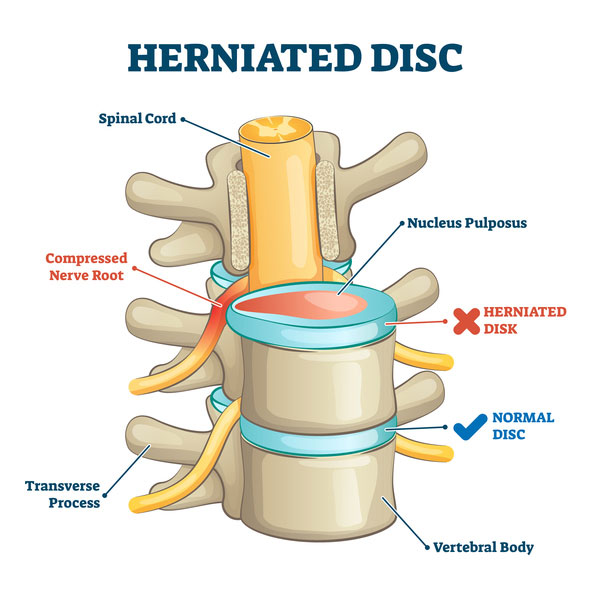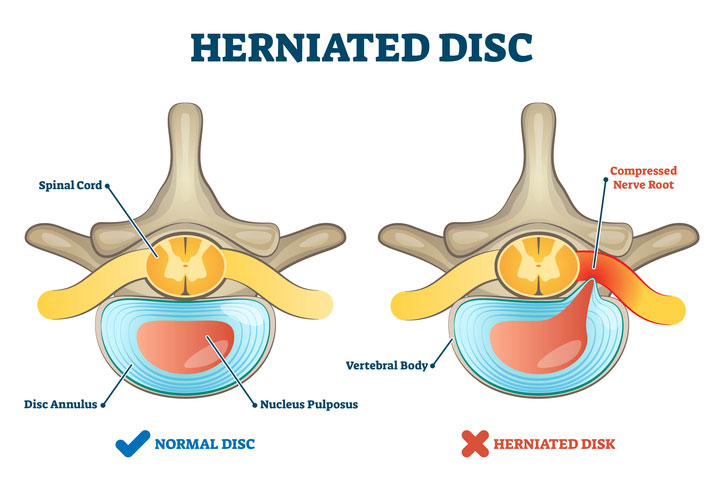Spinal Decompression at
Whitley Chiropractic
Safe, effective and cost-effective non-surgical relief from back or neck pain If you’re suffering from a herniated disc and chiropractic adjustments/therapy have not yielded sufficient benefit, you should ask your doctor if you might be a candidate for spinal decompression therapy.
Spinal Decompression Therapy using our DTS table is a safe and effective treatment for pain without the risks associated with surgery, anesthesia, infection, injections, or prescription medication. As you imagine, decompression therapy is rapidly gaining popularity due to the exceptional results treating chronic back pain without surgery.
NEW PATIENTS »
What is DTS Spinal Decompression?
 It’s a nonsurgical, traction-based treatment for herniated or bulging discs in the neck and low back. Anyone who has back, neck, arm or leg pain caused by degenerated or damaged discs may be helped by DTS Spinal Decompression therapy. Specific conditions that may helped by this therapeutic procedure include herniated or bulging discs, spinal stenosis, sciatica, facet syndrome, spondylosis or even failed back surgery. Many patients, some with magnetic resonance imaging (MRI) – documented disc herniations, have achieved “good” to “excellent” results after spinal decompression therapy.
It’s a nonsurgical, traction-based treatment for herniated or bulging discs in the neck and low back. Anyone who has back, neck, arm or leg pain caused by degenerated or damaged discs may be helped by DTS Spinal Decompression therapy. Specific conditions that may helped by this therapeutic procedure include herniated or bulging discs, spinal stenosis, sciatica, facet syndrome, spondylosis or even failed back surgery. Many patients, some with magnetic resonance imaging (MRI) – documented disc herniations, have achieved “good” to “excellent” results after spinal decompression therapy.
The computerized traction head on the decompression table or machine is the key to the therapy’s effectiveness. The preprogrammed patterns for ramping up and down the amount of axial distraction eliminate muscle guarding and permit decompression to occur at the disc level. This creates a negative pressure within the disc, allowing the protruded or herniated portion to be pulled back within the normal confines of the disc, which permits healing to occur. Your specific treatment plan will be determined by the doctor after your examination. Based on research and my clinical experience, the best results are achieved with 20 sessions over a six-week period. To reduce inflammation and assist the healing process, supporting structures sometimes are treated with passive therapies (ice/heat/muscle stimulation), chiropractic adjustments (when indicated) and/or active rehabilitation in order to strengthen the spinal musculature. Spinal decompression therapy has saved many people from spinal surgery.
 If you are suffering from a degenerated or herniated disc, I encourage you to explore safe and effective spinal decompression therapy before risking surgery. The rationale for treating a herniated disc without resorting to surgery has research support on its side: According to a recent study in the Journal of the American Medical Association, surgery is no more effective than non-invasive treatments, including chiropractic care, for patients with lumbar disc herniation causing sciatica. There are many spinal decompression systems in use today, most of which work equally well. The cost for 20 sessions can be as high as $5,000 at some facilities (NO ONE SHOULD BE PAYING THOSE KIND OF FEES); we believe spinal decompression should be affordable, so call today for a free consultation and a tour of the DTS Spinal Decompression Table.
If you are suffering from a degenerated or herniated disc, I encourage you to explore safe and effective spinal decompression therapy before risking surgery. The rationale for treating a herniated disc without resorting to surgery has research support on its side: According to a recent study in the Journal of the American Medical Association, surgery is no more effective than non-invasive treatments, including chiropractic care, for patients with lumbar disc herniation causing sciatica. There are many spinal decompression systems in use today, most of which work equally well. The cost for 20 sessions can be as high as $5,000 at some facilities (NO ONE SHOULD BE PAYING THOSE KIND OF FEES); we believe spinal decompression should be affordable, so call today for a free consultation and a tour of the DTS Spinal Decompression Table.
20 visits in our office would be $1100 that is $55/visit.
What does it mean?
Not familiar with some of the terminology. Don’t worry: Here’s a brief explanation of what these terms mean in relation to your spine.
- Anulus Fibrosis: The tough outer ring of a vertebral disc; it encases the nucleus pulposus (see description below) within the disc.
- Facet Syndrome: An irritation of one or more of the joints on the back of the spinal vertebrae, which comprise the spinal column.
- Herniated Disc: Displacement of the center of a vertebral disc through a crack in the outer layer. Disc herniation can put pressure on spinal nerves and cause pain.
- Muscle Guarding: Muscle spasming, often in response to a painful stimulus.
- Nucleus Pulposus: A gel-like substance within each intervertebral disc, surrounded by the annulus fibrosus.
- Sciatica: Pain in the lower back, buttocks, hips, or adjacent anatomical structures, frequently attributable to spinal dysfunction.
- Spinal Stenosis: Narrowing of the spine at one or more of three locations: in the center of the spine, where nerves branch from the spine, or in the space between vertebrae. This puts pressure on spinal nerves and can cause pain.
- Spondylosis: Otherwise known as spinal arthritis, spondylosis is a degenerative condition in which spinal discs weaken, particularly with age.
Schedule an Appointment
If spinal decompression sounds interesting to you, please contact Whitley Chiropractic today to set up an appointment with our team.
